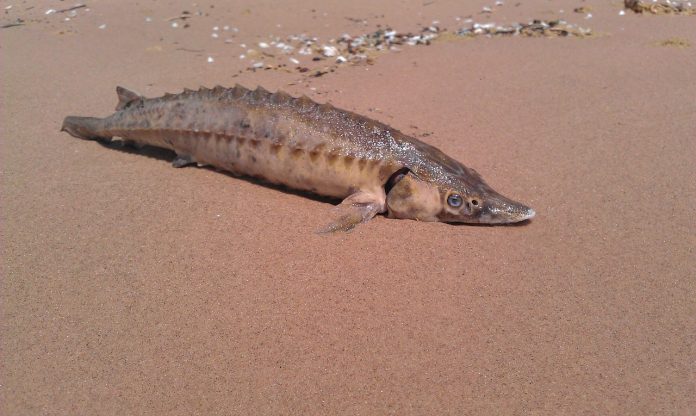Pity the Danube sturgeon. They have been around for 200 million years, much longer than humans, but over-fishing, modern dams and corruption mean they are rapidly dying out.
The sturgeon is an armoured fish with a perfect design that has hardly changed over time. Although it lives in water, it’s a better climber than a swimmer.
Sturgeons are best known as the source of caviar, the most expensive and exclusive food which is considered a status symbol.
The sturgeon swims hundreds of kilometers upstream from the Danube Delta toward Vienna to spawn every few years.
With its long, sharp nose, the sturgeon uses pectoral bones to anchor itself to the riverbeds of fast-flowing rivers of the Danube. It can grow more than three meters long and can live for decades.
But the strapping and resilient fish has been blocked by dams along the Danube between Romania and Serbia and farther along in Slovakia.
The Danube and the Black Sea have six species of wild sturgeon, the sterlet, the thorn sturgeon, the beluga, a massive fish which is prized for its caviar and can live to more than 100, the diamond or Russian sturgeon, the starry sturgeon, and the Atlantic or common sturgeon.
Since 2006, Romania has banned sturgeon fishing both in the Danube and in the Black Sea, their usual habitat, but illegal fishing continues, and the ancient fish is on the brink of extinction.
Beluga caviar is the most expensive type of caviar known as ‘black gold.’ At the beginning of the millennium, process ranged from $7,000 to $10,000/kg ($3,200 to $4,500/lb).
The coveted beluga sturgeon has a head that tapers into a prehistoric-looking black snout. It looks like a river dinosaur.
From 2009, Romanian and Norwegian scientists attached satellite transmitters to five sturgeon, which were then released, and headed back out to sea. The transmitters only sent the information to the satellite when the fish surface, which is extremely rare.
On Monday, more than 100 specialists from 22 countries will descend on the Danube port of Galati, eastern Romania for a two-day conference on “Conservation of the Danube Sturgeon- a challenge or a burden?” in what is billed as the largest event ever organized in Romania about the sturgeon.
The event is supported by the Romanian Academy, and the president of European Union strategy for the Danube in collaboration with the Sturgeon Task Force, the waters and forestry ministries, the environment ministry, the World Wide Fund for Nature and others.
“The Sturgeon represent an inestimable value for the aquatic biodiversity in the Danube and Black Sea,” said a statement from the International Commission for the Protection of the Danube River (ICPDR) – „Flagship Species for the Danube River.”
The sturgeon population has fallen dramatically from recent centuries alarming wildlife and protection groups who have warned about the disappearance of the prehistoric species and proposed concrete measures about how to save and repopulate it.
Fifty European states have signed an Action Plan to save the species, the Center for Sturgeon Research from the university said.



















